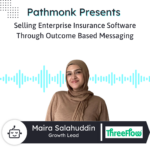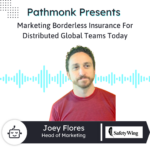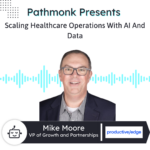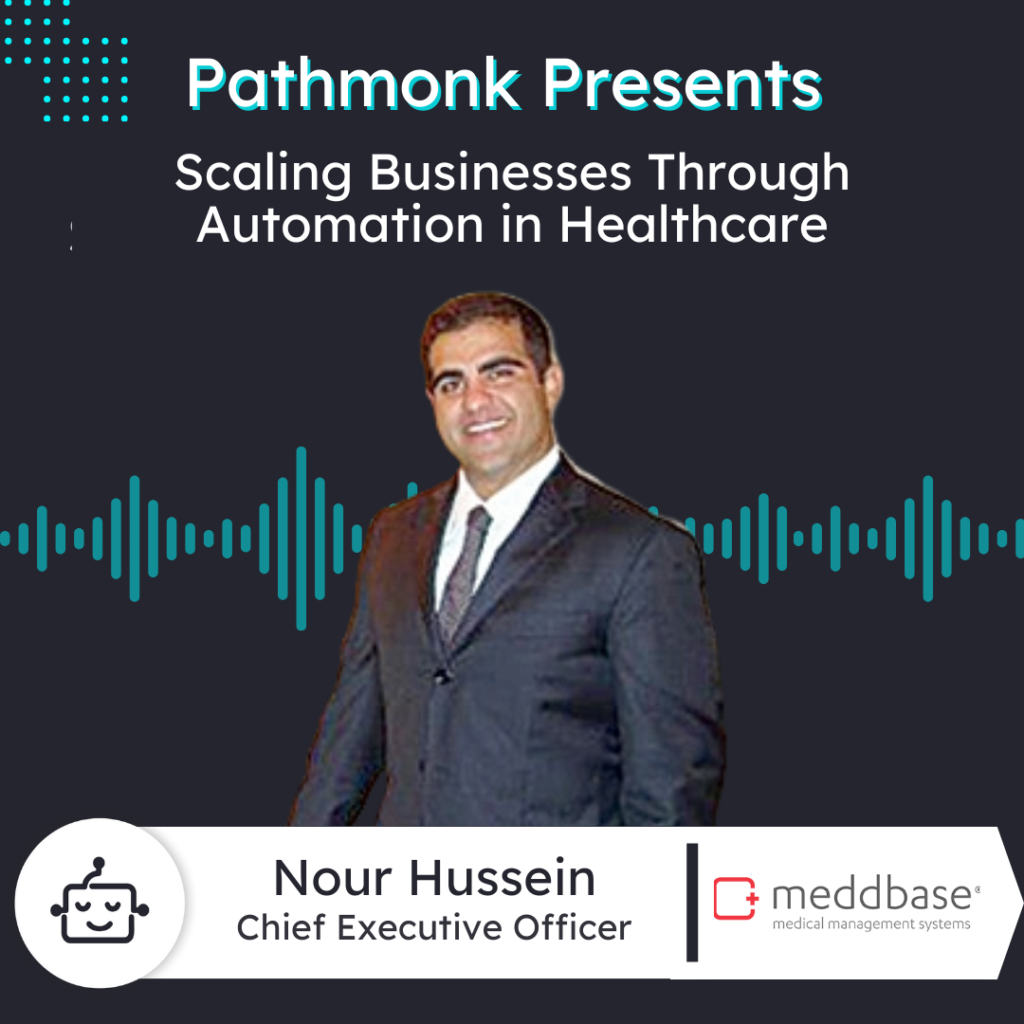
Introduction
Join us as we sit down with Nour Hussein, Head of Growth at Med D Base, the leader in clinical and occupational health software.
In this enlightening episode, Nour shares insights on how Med D Base is revolutionizing the healthcare industry through digital transformation and automation. Learn about their innovative approach to scaling businesses, enhancing patient experiences, and maintaining compliance in a rapidly evolving sector. Discover the unique challenges of marketing in the healthcare industry and gain valuable tips on customer acquisition strategies for medical professionals.
This episode is a must-listen for anyone interested in the intersection of technology and healthcare.
More Sales From Your Website With AI
Personalized interactions based on your users' behaviour to get +50% more conversions.
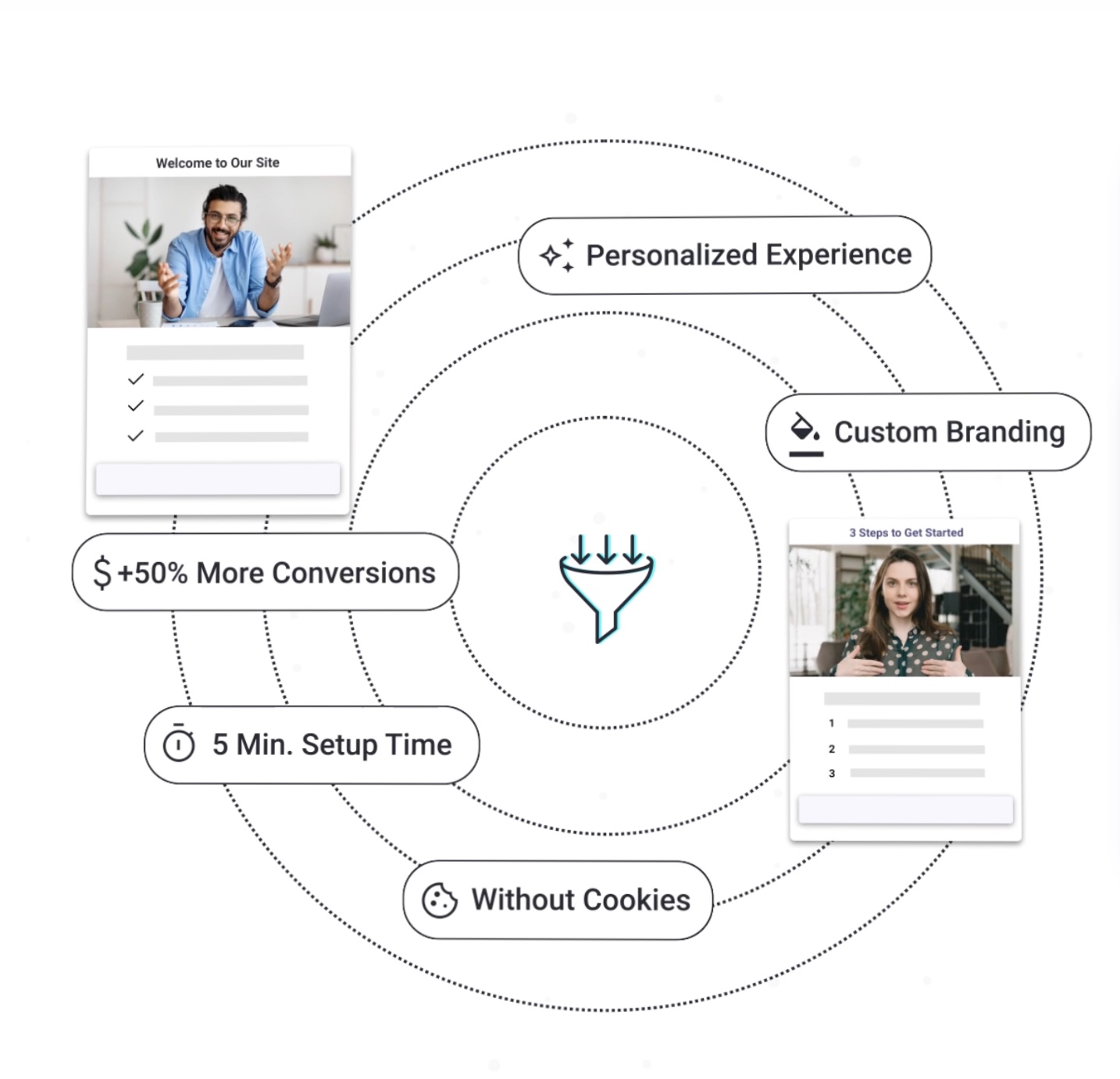
Ernesto Quezada: Pathmonk is the intelligent tool for website lead generation. With increasing online competition, over 98% of website visitors don’t convert. The ability to successfully show your value proposition and support visitors in their buying journey separates you from the competition online. Pathmonk qualifies and converts leads on your website by figuring out where they are in the buying journey and influencing them in key decision moments. With relevant micro experiences like case studies, intro videos, and much more, stay relevant to your visitors and increase conversions by 50%. Add Pathmonk to your website in seconds. Let the AI do all the work and get access to 50% more qualified leads while you keep doing marketing and sales as usual. Check us on pathmonk.com. Welcome to today’s episode. Let’s talk about today’s guest. We have Nour from Med D Base, Head of Growth with them. How are you doing today, Nour?
Nour Hussein: Very good, very good. How are you, Ernesto?
Ernesto: I’m doing great. Great. I’m glad that we’re able to connect and for you to be here on today’s episode. Thank you so much for being on.
Nour: Oh, no worries. Glad to be here. Awesome.
Ernesto: Awesome. Well, I’m sure our listeners are tuning in or wondering what Med D Base is all about, so in your own words, tell us a little bit more.
Nour: Absolutely. Med D Base is the leader in clinical and occupational health software. We were the first cloud-based solution in the UK, and right now we partner with the largest primary care, secondary care, and occupational health teams to help them digitally transform and scale their businesses efficiently. I think what really differentiates Med D Base from other clinical solutions is the depth of capability that we have. We work with some of the largest organizations, and they’re fairly demanding when it comes to the type and the requirements of the technology that they use, which makes us always on the forefront of the latest technologies that might help businesses scale.
I think the second piece is also a lot about the automation degree that we are able to provide to our customers. A lot of our customers have been able to grow their businesses by 400% without ever needing to have any headcount growth because the system is intelligent enough to continuously keep automating your workflows and processes. And then finally, what we get from our customers often is how medically and clinically driven Med D Base is as a system. It’s not a CRM where you’re keeping your patient records. This is a clinical software built for medical professionals who want to also extract a lot of data on their population’s health. And yeah, we’re very, very proud to be serving some of the largest businesses in the UK, Ireland, the US, Canada, and recently in Australia as well.
Ernesto: Definitely some great sectoring out to every spot there in the world. So awesome to hear that from Med D Base. And then so that way our listeners get a good understanding, Nour, of Med D Base, what would you say is that key problem that you guys like to solve for clients?
Nour: Most of the time, our customers are either using outdated solutions or systems that were basically purchased in the early 2000s. And a lot has changed since then. Technology is actually offering quite a lot more. Most of the time, our customers are large or mid-sized organizations that are either growing rapidly, so the systems they use cannot match their growing pace, or they are acquiring multiple other businesses or clinics that come with their own legacy systems. So the real problem that we try to solve is the ability for them to continuously operate in a compliant way by integrating and migrating all of their data into a single Med D Base instance.
But also, how do you make sure that while you are running a secure and compliant clinical process, you’re still being business-driven? At the end of the day, clinics, hospitals, etc., serve their patients. But with the privatization focus that’s happening now, a lot of them are also trying to move more towards a customer-driven experience. A patient is a customer at the end of the day. We enforce and support that as well by providing a patient-specific portal where clinics, hospitals, and occupational health teams can actually engage with their customers, help them automate the booking of appointments, but also anything from viewing your medical record or asking for follow-ups or filling a questionnaire. These are some of the areas that we really focus on solving for some of the customers that we work with.
Ernesto: Please. I mean, some of those customers, right, you have NHS, HCA Healthcare UK, United Healthcare Global. Is that usually your vertical that you guys like to go for? Or is there any other vertical that you guys like to go for as well?
Nour: Yeah, so our biggest growth vertical currently is actually corporate occupational health teams. These are Fortune 500 or 500 companies that have a very high regulated environment. So imagine in the construction or the aviation or oil and gas industry, you have to run a lot of medicals for your employees and workforce. And currently, this is our fastest-growing vertical. Our first and primary vertical is all about the GPs or general practice or primary care clinics and facilities. And then the third vertical or area of focus for us as well is the occupational health providers. These are the actual medical facilities that run a lot of the pre-employment medicals or case management. And most of the time, they run slightly separate from a patient clinic in that their customers are always corporate organizations, and their end users are managers in the organization who are referring their employees because they’ve had an incident on site, or creating a pre-employment case because someone needs to get their pre-employment medical, for example.
Ernesto: Definitely important. All right, great. Thank you so much for sharing that. And so say I was in the corporate office patient. How would I usually find out about Medibase? Is there a top client acquisition channel for you guys?
Nour: Yeah. So, and you have to understand first your persona or who your persona is. And I think what might work in the, let’s say, digital marketing space when you’re marketing a solution or software for a head of marketing growth that, you know, sales, they’re a lot more tech-savvy as a persona, so they’d be a lot more digital-driven. Our personas are usually medical professionals, heads of operations, or heads of occupational health, and these personas are usually very relationship-driven, they’re very referral-driven, they’re very event-driven. So these are some of the channels that we know often have the highest conversion rates. If you’re the chief technology officer of a large primary care network, you’re not going to buy your medical software by Googling “best medical software out there.” You already know what medical software is out there, and you’d only ever be interested in meeting or speaking with any provider if they’ve come through a referral or recommendation of someone in the industry or someone in your network, or if you happen to have met them, and they’ve happened to be at the right event or the right location.
I think it’s also important for us to understand that as much as we have direct channels, so we’ve got about four to eight direct channels of acquisition, we have found that actually influencing channels are quite powerful as well. The channels that don’t necessarily directly generate leads for your business, but they influence the decision-making process. And in the medical world, these would be industry bodies, for example, the Society of Occupational Medicine or the Faculty of Occupational Health, and these as medical professionals, graduate, unlike business professionals, they don’t disconnect from education. They’re always involved in conferences and events and medical bodies, and they trust very much these bodies and the opinion of these bodies. So whenever organizations are in these areas, they often have a higher credibility than a company that’s just cold-calling a medical professional to say, “Have you tried that software?”
Ernesto: Okay, awesome to hear that. And so that way our listeners who are tuned in can go ahead and visit you guys, they could always check you out at meddbase.com. What role does a website then play for client acquisition, Nour?
Nour: It’s a good question. I think if you’re talking mid-market, then the role that the website plays is essentially making sure that you are finding your customer at the right stage. And most of the time for SMB or mid-market, this would be someone who owns their own clinic or runs their own clinic or manages a clinic, and they’ve suddenly realized that this isn’t working. The system we use is not working, or that model or the multiple systems that we use are too painful. And they might choose to ask a colleague or a friend or go online and research and find out about other software that might be available. And most of the time when they’re landing on your website at that stage, they’ve essentially covered a couple of stages of the funnel. So they’re already aware and they’ve considered a few options, and they just now are approaching you, wanting to know, “Can you fix the problem that I have? And how much does it cost?” B2B buyers don’t like to be sold. They like to make the decision themselves. They don’t want to talk to a salesperson unless they really, really have to. So they want to go to the website and get as much information as possible from there.
Now, when you move to the enterprise persona, that’s a slightly different ballgame because enterprise sales do not happen on a website. But oftentimes, you’ve got buying influencers. So a technical buyer, another economic buyer as well, who’s being told about your business because of an RFP or because procurement has shortlisted you or because of any other process. So when they’re landing on your website as an enterprise buyer, they’re not looking to see if you have that feature or what’s the pricing because that’s someone else’s job. They’re looking to know if you can match the level of maturity of their organization. So they want to know more about your integrations. They want to know more about your case studies, your success stories. But also they want to know how you are talking about yourself because if you’re talking about yourself as the software to help you run your clinic, but I’m the global head of occupational health at British Petroleum, I’m not sure that you’re the right partner for me. I’m looking for an organization that’s talking about secure by default or compliance worldwide, or safe deployment and ongoing support. These are the keywords that I actually really want to buy. So it’s a very tough balance to crack. But for us, we always believe customers wouldn’t always find out about you through their website. They often are just going there to confirm that you are the partner that they thought you were because we’re a fairly sales-driven, or a sales-first kind of product.
Ernesto: All right then, thank you so much for sharing that with us, Nour. And, well, let’s switch gears a little bit, Nour, and let’s talk about you as a leader, you being the head of growth there for Med D Base. What are some key tasks you like to focus on in your day-to-day work?
Nour: I think one of the most important ones for me is I try to keep 30 minutes every morning where I’m catching up with the news. Usually, it’s a good chance while I’m having my morning coffee or getting ready, I just try to use that time to catch up on some of the latest news, a couple of podcasts here and there. Then I spend some time every day on LinkedIn. I actually find a lot of the LinkedIn content really powerful. It helps a lot because there’s some really incredible writers there that produce some really good content as well.
From a work-in-office perspective, I work with an incredible team. So we often have catch-ups or run through pipeline calls and meetings. But from my perspective, I often try to run through a lot of the team’s planners or planner boards that we’re having. I think most of the time, I focus my effort on removing blocks from my team. I think it’s the best use of my time than trying to do my own tasks. Someone could be waiting for two, three hours for me to sign off something or approve something, or help them decide on something that then might take a whole two or three days. But as long as it’s stuck in my queue, they’re unable to proceed. So I try to focus most of my days and most of my tasks this way. And I always really like the segregation between urgent-important, important-urgent. And then not every urgent is important and not every important is urgent. So I often try to make sure that I balance this up so that I can allow my team to maximize their productivity as well.
Ernesto: Definitely. I think that’s what you mentioned, right? That’s being a leader, removing their blockers. I think that’s the light, right? As long as they’re working, they’re able to connect, they’re able to go through that. That’s the important job. So awesome to hear that from you, Nour. And we’ll just jump into our next section then here, Nour, which is our rapid-fire question rounds. Are you ready for them?
Nour: Let’s go.
Ernesto: Awesome. First off, Nour, what is the last book that you read?
Nour: It’s a book by Graham Boyd called “Rebuild: the Economy, Leadership, and You.” I definitely recommend you check it out. The book itself and the author is Graham Boyd and Jack Reardon. They’ve actually also released another book called “The Ergodic Investor.” It’s a fantastic read. It talks about how we can start rebuilding our economy in a regenerative way. But it also has so many insights and talks you through a lot of the historical baggage that our economy is carrying for hundreds and hundreds of years and has led to the way we currently run businesses and run our economy in a non-sustainable way that’s also damaging and impacting the environment and the planet. But it doesn’t just leave it there. It actually paves a way and paves a path of, “It is doable. We can fix this. We can actually rebuild our economy. We can rebuild our planet in a very insightful way.” So that’s a really recommended book from my perspective.
Ernesto: Okay, perfect. Awesome. Great to hear that. And, well, if there would be no boundaries in technology, Nour, what would be that one thing that you want to have fixed for your role as a marketer today?
Nour: It’s a good question. I still think the world can definitely use a better channel optimization and conversion rate optimization solution. There’s definitely a lot of tools out there and a lot of them focus and specialize on different areas. But I definitely think if technology can essentially fix and link a lot of the ways we try to attribute the marketing activities to the sales activities in a complex algorithm, I think that would definitely be a solution that I would be interested in.
Ernesto: Perfect. Awesome. Next then, is if there’s one repetitive task that you could automate, what would that be?
Nour: Contract reviews.
Ernesto: Especially in the medical field, right? I think there’s a lot of things that have to go into it.
Nour: Definitely, absolutely, absolutely.
Ernesto: All right, perfect. Also, and well, Nour, lastly, I mean, you have tons of experience already in the marketing world, but what is that one piece of advice that you would give yourself if you were to restart your journey as a marketer today?
Nour: I think for me it would be to understand that marketing is a tool. It’s not a defined role or a defined structure or a defined objective. I think oftentimes people confuse marketing for the activities that they have seen rather than understanding that marketing is a way for you to grow your business and it has to be unique to your business and it has to be specific to your business, it has to match your product and it has to help you focus on your persona. But what we often see and what I’ve learned over years from some incredible people is if you start with understanding what it is that you’re trying to achieve, you will avoid spending months and months and years and years and millions of dollars on trying to do repetitive marketing activities that you have seen others do, assuming that they’re the right activity for you. So I think, yeah, that would be the piece of advice that I had to learn the hard way of having to really make a lot of mistakes and then go back and say, “Well, it’s working for Microsoft, why isn’t it working for us?” Or “It’s working for this company in this sector, why shouldn’t it work for us?” And you need to understand that marketing activities are just the tip of the iceberg. You need to make sure that you can complete that iceberg yourself.
Ernesto: Some great advice, not just for yourself, but for everybody. Thank you so much for that, Nour. And well, we are coming to the end of the show today, Nour. But before we do end, I do want to give you the last word. If someone forgets everything about the interview today, what is that one thing they should remember about Med D Base?
Nour: That it is the best clinical software platform and solution that’s out there.
Ernesto: There, you guys heard it from Nour. Check them out at meddbase.com. Nour, thank you so much for being on with us today. To our listeners, thank you so much for tuning in, and I’m looking forward to our next episode at Pathmonk Presents. Thanks a lot, Nour.
Nour: Thank you. Thank you, Ernesto.




